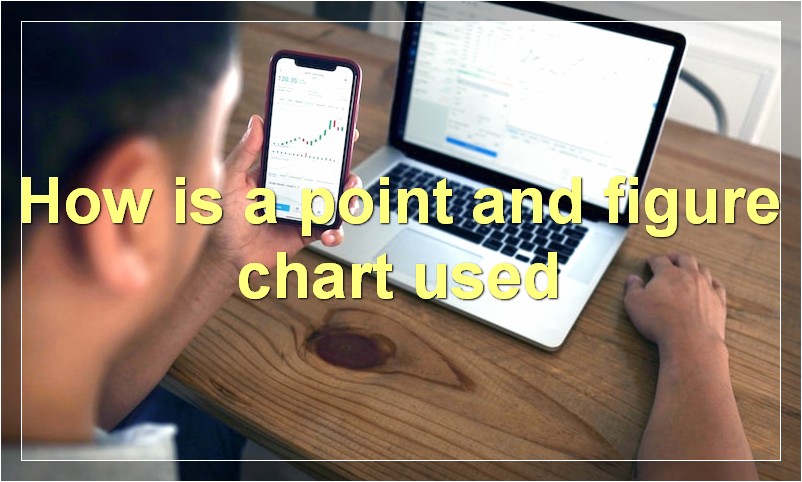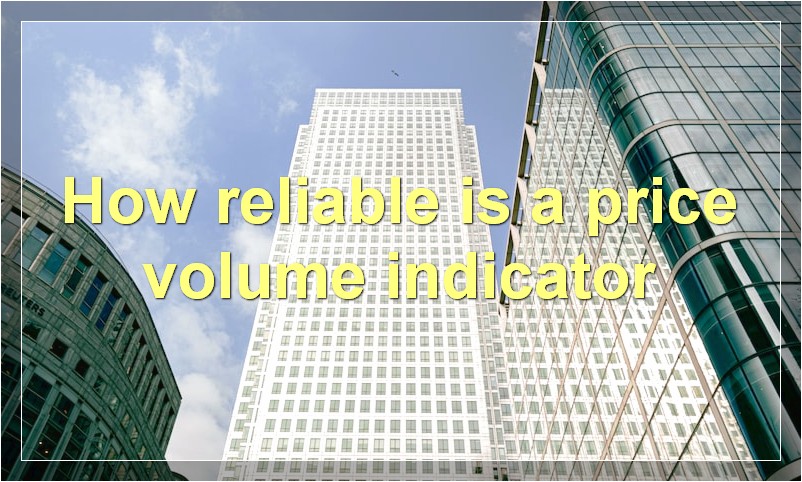If you’re an active trader, then you know the importance of having a reliable price volume indicator. In this article, we’ll show you everything you need to know about the price volume indicator, including how to use it and what to look for.
What is a price volume indicator
A price volume indicator is a tool that allows traders to analyze the relationships between price and volume. This is done by charting the price and volume data on a single graph.
The price volume indicator can be used to identify trends, confirm breakouts, and spot reversals. It can also be used to gauge market momentum.
The price volume indicator is a valuable tool for any trader who wants to get an edge in the markets.
How is a price volume indicator used

A price volume indicator is used to show how much volume is being traded for a particular asset. It can be a useful tool for traders to monitor market activity and make decisions about when to enter or exit trades.
What are the benefits of using a price volume indicator
There are many benefits of using a price volume indicator. One benefit is that it can help traders to identify potential reversals in the market. By looking at the relationship between price and volume, traders can look for clues that a reversal may be about to occur. This can help them to make more informed trading decisions and potentially avoid making costly mistakes.
Another benefit of using a price volume indicator is that it can help traders to gauge the strength of market trends. By looking at the volume of trades being made, traders can get an idea of how strong a particular trend is. This information can then be used to make decisions about when to enter or exit trades.
Overall, there are many benefits that come from using a price volume indicator. For traders, this tool can be a valuable addition to their toolkit when it comes to making informed trading decisions.
What are the drawbacks of using a price volume indicator
Price volume indicators are a type of technical analysis tool that use price and volume data to predict future price movements. While price volume indicators can be helpful in identifying trends and making predictions, there are some drawbacks to using them.
One drawback of using price volume indicators is that they can be lagging indicators. This means that they may not signal a change in trend until after the trend has already begun. As a result, traders may miss out on opportunities to enter or exit a trade.
Another drawback of price volume indicators is that they can be influenced by false signals. This can occur when there is an abnormal increase in volume but no corresponding change in price. This could lead to trades being made based on incorrect information.
Overall, while price volume indicators can offer some advantages, there are also some potential drawbacks to using them. Traders should be aware of these drawbacks before using them to make trading decisions.
How accurate is a price volume indicator
Price volume indicators are tools that stock market traders use to make decisions about when to buy or sell a security. These indicators are calculated using data from the trading day, and they show how much volume is being traded at a given price. Price volume indicators can be used to identify trends in the market, and they can also be used to confirm other technical indicators.
How reliable is a price volume indicator

There is no indicator that is 100% accurate all the time, but the Price Volume Indicator (PVI) is a very reliable tool that can help you make informed decisions about when to buy or sell a stock. The PVI measures the amount of trading activity in a stock and compares it to the stock’s price movement. If the PVI is increasing and the stock price is also increasing, it is a good sign that the stock is in demand and the price is likely to continue to rise. Conversely, if the PVI is decreasing while the stock price is also decreasing, it is a sign that the stock is not in demand and the price is likely to continue to fall.
What is the difference between a price volume indicator and other types of indicators
There are many different types of indicators that can be used when trading stocks, and each has its own unique purpose. Price volume indicators are one type of indicator that can be used to measure the amount of activity in a stock. Other types of indicators include momentum indicators, trend indicators, and support and resistance levels.
Price volume indicators are a valuable tool for traders because they can help show whether a stock is being bought or sold by large institutions. If there is a lot of buying activity, it can be a good sign that the stock is undervalued and is likely to go up in price. On the other hand, if there is a lot of selling activity, it could be a sign that the stock is overvalued and is likely to go down in price.
Other types of indicators can also be helpful in making trading decisions. Momentum indicators can show whether a stock is gaining or losing momentum. Trend indicators can help identify whether a stock is in an uptrend or downtrend. And support and resistance levels can indicate where a stock is likely to find support or resistance as it moves up or down.
All of these indicators can be useful in making trading decisions. However, it’s important to remember that no indicator is perfect, and all indicators should be used in conjunction with other information before making any trades.
How do I choose a price volume indicator
There are a few things to consider when choosing a price volume indicator. The first is what type of trading you will be doing. If you are day trading, you will want an indicator that is fast and responsive. If you are swing trading, you can afford to have an indicator that is a little slower.
The second thing to consider is the time frame you will be using. If you are using a longer time frame, you will want an indicator that is less noisy. If you are using a shorter time frame, you can afford to have an indicator that is more responsive.
The third thing to consider is what type of market you will be trading. If you are trading in a very volatile market, you will want an indicator that is less responsive. If you are trading in a more subdued market, you can afford to have an indicator that is more responsive.
How do I interpret a price volume indicator
If you’re looking at a price volume indicator, there are a few things you can take into account to try and interpret what it’s telling you. First, take a look at the overall trend that the indicator is showing – is it moving up, down, or sideways? This can give you some clues as to whether prices are generally increasing, decreasing, or staying the same.
Next, take a look at the volume data that is accompanying the price data. If you see large volumes when prices are moving up, this could be an indication that there is significant buying interest in the market. Conversely, if you see large volumes when prices are falling, this could be an indication of heavy selling pressure.
Finally, pay attention to any spikes or sudden changes in the indicator. These could be indicative of important turning points in the market, so it’s worth paying close attention to them. By taking all of these factors into account, you should be able to get a better idea of what the price volume indicator is trying to tell you.
What are some common mistakes people make when using a price volume indicator
When using a price volume indicator, one of the most common mistakes is failing to take into account the factors that can affect the volume. For example, if there is a large number of orders placed at the same time, this can skew the volume data. Additionally, if there is a low volume of trading activity, this can also distort the data. As such, it is important to be aware of these factors and how they can impact the accuracy of the price volume indicator.

